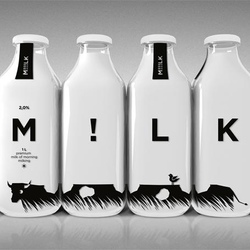China's middle class increasingly opts for seafood amid declining pork consumption
A structural decline in China's pork consumption, driven by the country's changing demographics as well as HEALTH concerns and rising incomes, will benefit the seafood industry, according to Bu Rui Ke, a research consultancy.
However, the firm found that seafood is facing a battle with beef to become the protein of choice among China's fast-growing, higher-income middle class.
Average per capita pork consumption in CHINA peaked at 42 kg per person in 2014 - down from 11.7 kg in 1981 - but that figure has since fallen below 40 kg, despite a sharp drop in pork prices since the recovery national pig population since the end of 2021 following the devastating African swine fever pandemic.
Pork has long been considered the main protein in the Chinese diet and is generally cheaper than seafood. Since price is the main motivator for Chinese consumers, seafood has often been the loser, but the correlation between the two seems to have become elusive as average Chinese income has risen, giving more consumers the opportunity to choose seafood as a healthier dietary option.
China 's aging population is one of the driving forces behind the switch to seafood, as well as beef and chicken, according to research by BU Rui Ke, which has identified growing demand among older consumers and urban youth for healthier proteins. In 2021, China consumed 9.98 million tons of beef, of which almost a third was imported. Beef imports into the country rose 10 percent year on year to 2.34 million tons last year, ten times more than in 2016.
China's seafood imports in 2021 totaled 5.71 million tons - this figure includes both resources for processing and products not intended for human consumption, such as fishmeal, up 0.72% from last year year. Seafood exports from the country decreased by 5.62% to 3.59 million tons.
Not all seafood imported by China was consumed as a significant portion of China's imported seafood was then processed and re-exported. But among Chinese seafood imports, the fastest growing segment in 2021 was a valuable product for domestic consumption. This growth was not too much hampered by average seafood prices, which rose 8.8% year-on-year in January and 4.9% in February, or a 41.6% drop in pork prices due to the ongoing recovery of the national stock from ASF.
China's seafood production reached 66.9 million tons in 2021, representing representing a 2.2 percent year-on-year growth compared to 2020. Farm production accounts for 53.8 million tonnes of the total in 2021. By comparison, the plan calls for 55 million metric tonnes of pork production by 2025.
The seafood eclipse of pork has sparked a surge in interest in the seafood stock among many of the country's retail investors, who have also watched the Chinese government take numerous measures to support the country's continued growth in aquaculture and long-distance fishing operations.
However, according to a Bu Rui Ke report, there is an opportunity for Chinese pork producers to regain market share by shifting their focus to higher value products. China's pig industry is much more consolidated than the seafood sector, which makes this task easier. According to Liu Hanyuan, CEO of Tongwei Group, a large aquaculture and aquafeed company, the top ten Chinese companies ranked by aquaculture products account for only 2 percent of the country's aquaculture production, yet the market share of the top 10 pig companies is 12 percent. , and the market share of the top 10 poultry companies is 40 percent.
Injustice in China's tax policy is preventing the aquaculture sector from achieving scale and standardizing operations, Liu said at the National People's Congress last month in Beijing. Liu said the wholesale fish tax discourages consolidation in the sector, which hurts the seafood industry, especially because highly integrated pork and poultry processors are not subject to similar taxes because they raise their own animals.



























































